Back in 1997, when Low End Mac was getting started, Apple’s future was anything but certain. Could it find a white knight to come in and rescue the brand? Would Steve Jobs be able to keep the “beleaguered” company afloat?
Today Apple is one of the most valuable brands and companies in the world. Mac sales are steady while the Windows PC market is in decline, the iPhone is the most popular smartphone brand, and the new Mac Pro has everyone marveling at what Apple has wrought.
That said, Mac sales are stagnant, and the iPod line is in decline. Is Apple in danger of becoming an iOS-only company?
Mac Future Assured
According to Apple’s Phil Schiller, the Mac’s future is assured. While iOS is a wonderful touch-based platform, the Mac OS has been perfected over a 30 year period to become the best keyboard-and-pointing-device platform available. While there have been some changes made to OS X since 10.7 Lion arrived so it feels more comfortable to iPhone and iPad users, OS X remains fundamentally a desktop OS.
As Microsoft has discovered with the backlash against Windows 8’s touch-based paradigm for mobile, notebook, and desktop devices, touch just isn’t the experience people want on a desktop computer.
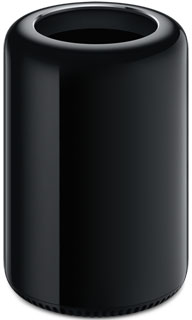 While we can’t expect to see a lot of new demand for Mac desktops and notebooks, we anticipate it remaining a solid market. As the PC market declines, the Mac market will decline at a slower rate, becoming a bigger portion of the desktop market.
While we can’t expect to see a lot of new demand for Mac desktops and notebooks, we anticipate it remaining a solid market. As the PC market declines, the Mac market will decline at a slower rate, becoming a bigger portion of the desktop market.
Intel or Apple CPUs?
There have been rumors for a couple years that Apple will eventually move the Mac to its own A-series of processors, the same ones used in the iPhone, iPad, and iPod touch. That could happen down the road, but probably not for at least a year or two.
For one, it would require an Intel x86 emulator to run existing Mac software, and that would really sap performance. And then there’s the raw power of the A7 chip used in the iPad Air and iPhone 5S. Geekbench gives the 1.4 GHz iPad Air a single core score of 1425 and a multi-core score of 2580 (double the iPhone 5C and over six times that of the iPhone 4S).
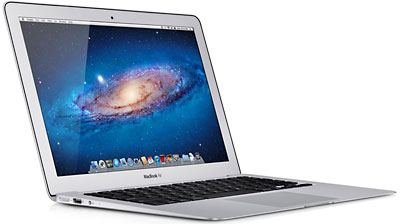 By way of comparison, the least powerful current Mac is the 11″ 1.3 GHz i5-based MacBook Air, with a 32-bit single core Geekbench score of 2377, a 64-bit score of 2597, a 32-bit multi-core score of 4480, and a 64-bit multi-core score of 5040. That’s twice the power of the 1.4 GHz A7 used in the iPad Air.
By way of comparison, the least powerful current Mac is the 11″ 1.3 GHz i5-based MacBook Air, with a 32-bit single core Geekbench score of 2377, a 64-bit score of 2597, a 32-bit multi-core score of 4480, and a 64-bit multi-core score of 5040. That’s twice the power of the 1.4 GHz A7 used in the iPad Air.
Extrapolating from Moore’s Law, we can expect Intel’s CPUs to gain 40-50% more power per year, so a 2014 entry-level MacBook Air might bench at 7000 to 7500, and a 2015 version in the 10,000 range.
UPDATE: As of September 2015, with the iPhone 6S and 6S Plus not yet available, the best Geekbench 3 score yet achieved is the iPad Air 2 at 1808 single-core and 4525 multicore, close to what this article predicts. We anticipate the new iPhones will score in that range once they are available for testing.
By doubling the 64-bit cores in the A7 and boosting clock speed a bit, we could see an A8 CPU in late 2014 capable of a Geekbench score in the vicinity of 5000. That would be plenty of power for a smartphone, tablet, or Apple TV, and if Intel emulation isn’t an issue, it would be adequate for an entry-level Mac notebook. Give Apple a year beyond that – and programmers time to prepare Mac apps for A-series chips – and there might be enough power for the MacBook Air.
This is what has Intel scared. An A-series chip in a laptop would have better cooling and could run much faster than the 1.4 GHz in today’s iPad Air (let alone the Mac mini and iMac), and Apple’s designers will give Intel’s chip engineers a run for their money on who can create the most energy efficient 64-bit CPU for personal computing.
Apple Has Done It Before
Apple has a history of changing chip architectures. Starting with the Apple I in 1976, Apple’s earliest computers used 8-bit 6502 CPUs, topping out with the 16-bit 65816 chip at the heart of the Apple IIGS. (To keep the IIGS from competing with the Macintosh, Apple ran its CPU at 2.8 MHz, even though the slowest version of the 65816 ran at 4 MHz – and some ran as fast as 14 MHz.)
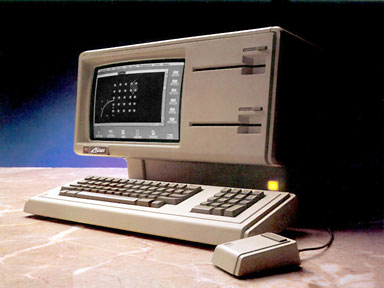 When Apple introduced its Lisa in 1983, it adopted the Motorola 68000 CPU, and a year later the same chip was at the heart of the first Macintosh. Macs got faster and more powerful for over a decade using the 680×0 family of processors, but then Apple changed chips again.
When Apple introduced its Lisa in 1983, it adopted the Motorola 68000 CPU, and a year later the same chip was at the heart of the first Macintosh. Macs got faster and more powerful for over a decade using the 680×0 family of processors, but then Apple changed chips again.
The first PowerPC (PPC) Macs arrived in early 1994 and soon displaced the last 680×0 Macs. Apple continued to introduce new Macs around PowerPC chips until late 2005.
Starting in January 2006, Apple moved the entire Macintosh line to Intel x86 CPUs, and that’s what powers Macs to this day.
After seven years with 6502, Apple moved to 68000. After 11 years with 680×0 CPUs, Apple moved to PowerPC. And after 12 years with PPC, it moved Macs to Intel. It’s entirely possible that Apple could move its lower-end Macs to A-series processors within the next two years.
Is the iPod Doomed?
While the iPhone is on a solid growth trajectory, especially with China Mobile adopting it this year, and the iPad solidly entrenched in the tablet market, the handwriting is on the wall for iPods. iPod unit sales peaked in the 2008 holiday quarter and have been declining ever since.
Smartphones and tablets have taken some of those sales, and solid state iPods just don’t need to be replaced as quickly as the old hard drive-based iPods. I’m sure Apple will continue to sell low-end iPods, but that’s never going to be a big market again.
The only model that has a real future is the iPod touch, which is essentially an iPhone stripped of its mobile phone and wireless G3/G4 data capabilities. It’s great for kids, for students not allowed to use a phone at school, as a pocketable gaming platform. And with things like FaceTime, Google Voice, and Skype, it’s a great way to carry on voice and video conversations.
If anything, I see the iPod touch eventually coming in a 4G LTE version so users can have data access anywhere, not just where there’s WiFi available. Even then, the iPod touch will take a back seat to the iPhone and iPad.
What Next?
I would love to see a 6″ or so iPad/iPod touch with 4G LTE designed for uses where a 4″ screen is too small and an 8″ iPad mini is too large. I’m thinking things like GPS. I use Waze daily on my iPhone 4S, and while it works nicely, bigger would definitely be better. Easier to read the text. Easier to touch the on-screen buttons at arms length. It could also be a great size remote control for Apple TV.
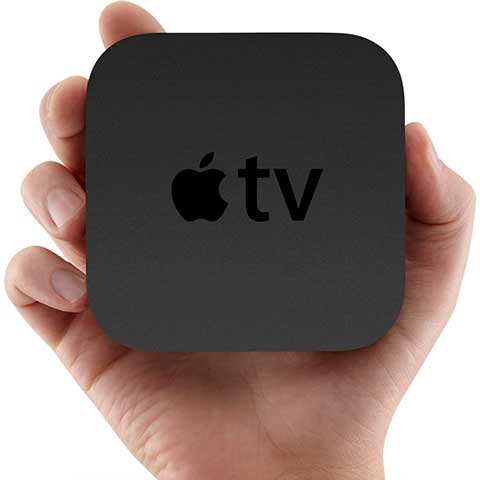 Speaking of which, Apple TV is coming into its own. We’ve cut back our DirecTV at home to the minimum package. We’ve been using Netflix on our Wii for years and recently signed up for Hulu Plus to keep up on current programming. When this Michigan winter goes away and the roof is clear, I’ll put up a rooftop antenna, and then we’ll be able to ditch the dish for good – at least that’s the plan.
Speaking of which, Apple TV is coming into its own. We’ve cut back our DirecTV at home to the minimum package. We’ve been using Netflix on our Wii for years and recently signed up for Hulu Plus to keep up on current programming. When this Michigan winter goes away and the roof is clear, I’ll put up a rooftop antenna, and then we’ll be able to ditch the dish for good – at least that’s the plan.
We plan to buy a Roku 1 this month with the money we’re saving by reducing our DirecTV service from three TVs plus whole-house DVR, HD video, and a lot of extra channels to the cheapest one they offer. Wii is okay, but being standard definition (like the entry-level DirecTV package), it doesn’t look so good on our 42″ TV. Roku 1 will give us streaming HD video, and what we save on DirecTV pays for the device the first month.
Why Not Apple TV?
As a Mac and iPhone user, the logical question is Why Roku instead of Apple TV? The answer is two-fold: Price and low-end Macs. Roku is $40 less expensive than Apple TV, and our newest Macs don’t support AirPlay. There’s really no big advantage to Apple TV in our case.
Why Not Chromecast?
At $30 to $35, Chromecast is even cheaper than Roku, but it requires you use a smartphone or computer to control it. The geek in me likes that, but practically a regular remote control is a much better way to do things.
Future Tech
I believe Apple TV has a strong future, and maybe at some point it will be the right device for us. Rumor has it the next version will support iOS gaming and have a tuner for your cable, satellite, or over-the-air antenna. If Apple includes DVR capability, even better.
DVR has spoiled us, and I expect we’ll be investing in something to replace it, either with a stand-alone DVR or repurposing an older Mac (perhaps my 2007 Mac mini) or Linux PC to that end.
Bullish on Apple
Where Apple was flailing in 1996 and 1997, it has a solid footing today. iPhone will continue to be a significant player in the smartphone market – and a major profit center. iPad will continue to hold its own in the exploding tablet market, especially attractive to those with a poor low-end tablet experience with those sub-$100 tablets. Apple TV is going to grow into something more, and Macs will remain an important part of the equation.
If the iPod line fades to almost nothing, so be it. For the near future, the brand still has great name recognition, and the iPod touch fills a special niche, so even if other iPods may someday be discontinued, I think the Touch will remain.
Apple has shown us how innovative it can be by creating its own A-series CPUs, being the first mobile platform to go 64-bit, making the iPad Air lighter than anyone imagined, and completely changing the face of top-end computing with the 2013 Mac Pro. It makes me wonder what the next Mac mini might look like!
Keywords: #macfuture #ipodfuture #applefuture
Short link: http://goo.gl/gPkuyt
searchwords: macfuture, ipodfuture, applefuture

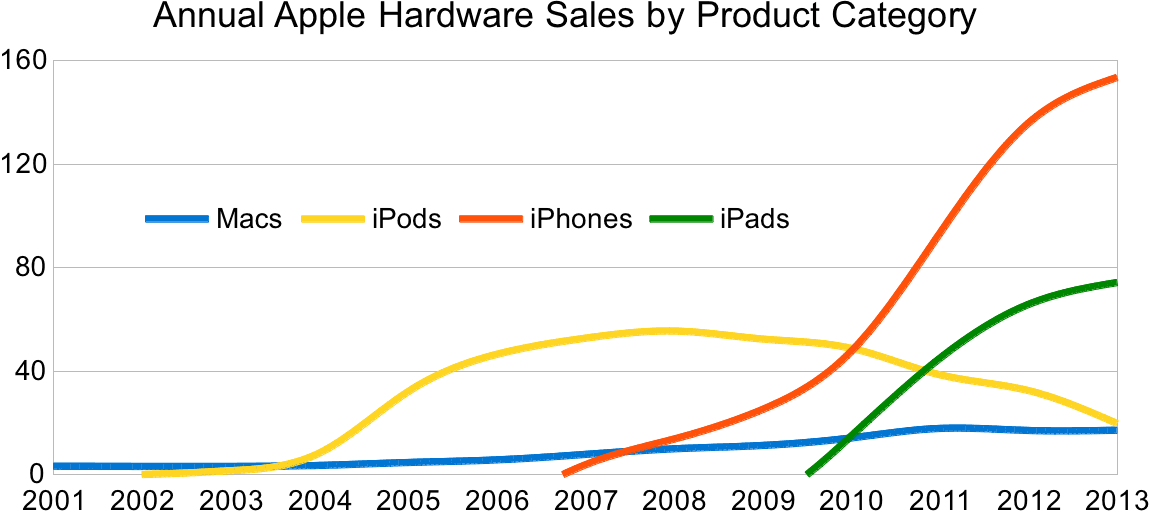

Never underestimate Intel. They’ve shown that when it looks like they might fall behind they make a huge leap forward instead. Intel has been working hard to drastically reduce power consumption while still increasing performance. My bet is that they will scale down faster than ARM can scale up. It’s already happening in the Windows tablet world where Atom Windows 8 tablets had better performance and battery life than ARM based RT tablets.
If Apple moves to their own processors, wouldn’t that have a disastrous effect on being able to run Windows in some way? Is Apple even concerned about dual booting Windows anymore?
By the way, the Chromecast is a fantastic little device! Controlling it from any device (Android, iOS) is smooth and intuitive. It’s obviously a little better if you’re in the Android ecosystem.
I only use Boot Camp so I can run a game or two. If I could be sure that something like Parallels would give me native performance for graphics, I wouldn’t even do that. Virtualization is much nicer than having to restart to Windas.
Not that I dislike Windows 8.1, but I like OS X MORE.
And OS X doesn’t grind my HD like Miley Cyrus.